Time and Cost to Build Magento Store — Answered!

Sure, you made a smart move by finalizing Magento as a platform for your online store.
Magento empowers thousands of businesses of all sizes with its robust features and unmatchable scalability. However, getting started with Magento goes beyond a single decision. And I know, your concerns about development time and cost have brought you here.
Rest assured, you’re in the perfect place to find your answers. In this guide, we’ll deeply understand all your questions about Magento pricing, development time, and more that help jumpstart your journey with Magento.
Let’s start with understanding the cost of building a store on Magento.
Cost to Build Magento Store

I know, you’re concerned about budget and want an estimate that shares a clear idea of how Magento how Magento will align with it. We genuinely wish to provide you with an exact cost of Magento development, but unfortunately, we can’t do so without understanding your unique requirements.
However, we promise to offer cost estimates that closely reflect actual Magento development values based on our decades of experience. 😊
To start, here is a breakdown of the costs associated with Magento store development.
| Magento Store Development Cost | ||||
| No. | Cost Factors | Magento Open Source | Magento Commerce | Magento Commerce Cloud |
| 1. | Magento License Cost | $0 | $22,000–$125,000 per year | $40,000–$190,000 per year |
| 2. | Domain Name | $10–$20 per year | $10–$20 per year | $10–$20 per year |
| 3. | Hosting | $100–$500 per year | $500–$6,500 per year | $0 |
| 4. | SSL Certificate | $50–$300 per year | $50–$300 per year | $50–$300 per year |
| 5. | Pre-built Theme | $0–$200 | $0–$200 | $0–$200 |
| 6. | Custom Theme Design (UI/UX) | $1,000–$5,000+ | $1,000–$5,000+ | $1,000–$5,000+ |
| 7. | Extensions | $0–$600 per extension | $0–$600 per extension | $0–$600 per extension |
| 8. | Magento Store Development | $1,800–$10,000+ | Up to $25,000 | Up to $25,000 or more |
| — | Total Magento Development Cost | $$$ | $$$$ | $$$$$ |
| Additional Costs to Consider (After Store Launch) | ||||
| 9. | Support and Maintenance | $1,000–$5,000 per month | $1,000–$5,000 per month | $1,000–$5,000 per month |
| 10. | Payment Providers Fees | 2.9% + $0.30 per transaction | 2.9% + $0.30 per transaction | 2.9% + $0.30 per transaction |
Note: the actual estimate may have different figures for cost, however, it will range near these figures. Get an actual quotation for your Magento store development here.
This estimation shares an idea of what your Magento development figures will look like, now, let’s get into understanding each of these costs associated one by one.
1. Magento License Cost
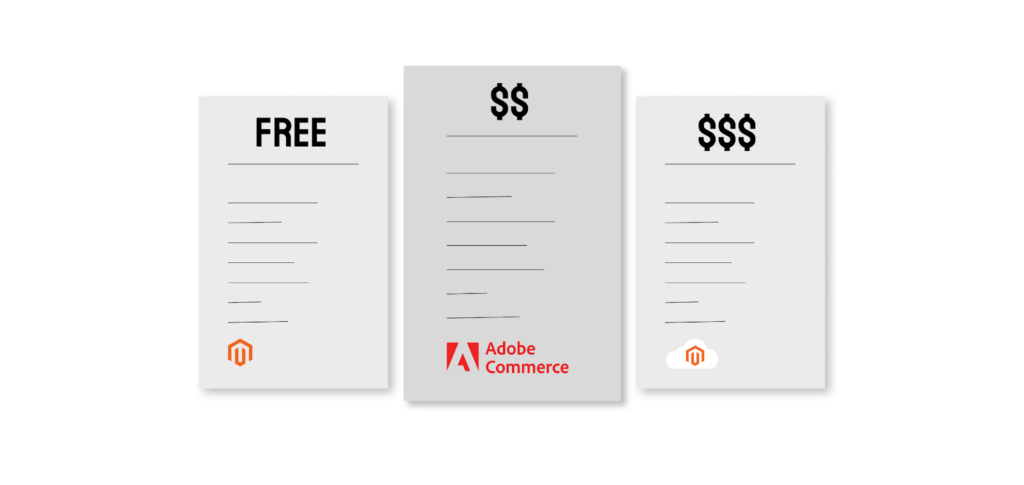
Firstly, it’s important to note that there are three editions of the Magento platform: OpenSource, Commerce (now known as Adobe Commerce), and Commerce Cloud.
Magento Open Source Pricing:
Magento Open Source is free to use and is a great option for businesses that plan to start with a smaller store and want to expand over time. It comes with all the necessary features for selling online without paying for any licenses; however, it does require technical know-how and is not entirely free.
If you decide to proceed with the open-source edition, you’ll need to hire in-house developers or a Magento development agency to ease your journey with the platform. And that’s the cost you consider
Magento Commerce & Magento Commerce Cloud Pricing:
Adobe Commerce offers a premium version that consists of all the features of Magento Open Source, and more advanced features that are required for large-scale businesses.
On the other hand, Magento Commerce Cloud is a PaaS or Platform-as-a-Service platform (previously known as, Enterprise Cloud Edition), which is a self-hosted version of Magento. It offers a complete eCommerce solution for all business sizes. It has the power of Magento’s open-source, with cloud-based hosting and managed services.
Both of these platforms come with their pricing packages, where the license cost is determined based on your annual Gross Merchandise Value (GMV) and Average Order Value (AOV). To obtain a quote for your business, you’ll need to get in touch with an Adobe expert.
2. Domain Name

You’ll need to name your online store and that will require you to purchase a domain name.
For that, you can register a brand-new domain name from any domain provider such as Bluehost, Mailchimp, HostGator, GoDaddy, and more. It will cost you around $10–$20 per year.
3. Hosting

Investing in hosting is similar to renting a space on the server to store your website data. Once you’ve purchased your domain name, you’ll now need a reliable and secure Magento hosting solution.
When you’re working with Magento Open Source or Adobe Commerce, you can go for third-party hosting providers. For open source, hosting may cost around $100–$500 per year, depending on the provider you choose. Adobe Commerce, on the other hand, may cost higher, ranging from $500–$6500 yearly, depending on your site’s complexity.
Lastly, if you’re choosing the managed services aka Magento Commerce Cloud, you won’t need to pay for hosting as your data will be stored in Magento’s cloud.
4. SSL Certificate
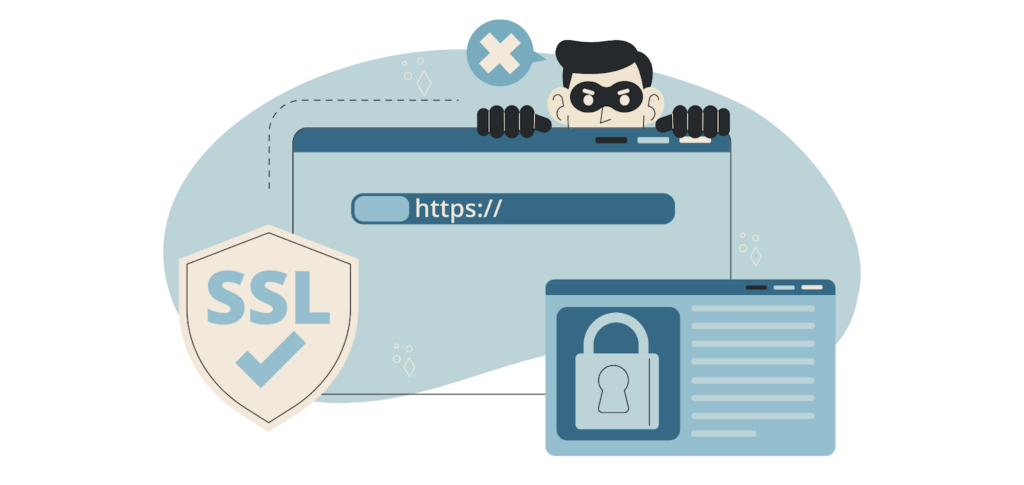
Malware attacks often target online stores. Therefore, once you’ve selected your hosting provider, it’s crucial to add layer of protection to your store.
An SSL (Secure Sockets Layer) certificate can help you achieve this. Purchasing an SSL certificate offers various benefits, which I’ve listed below:
- Increased security
- Faster load times
- Improved search engine rankings, as Google prioritizes websites with SSL certificates
Moreover, the pricing for SSL certificates typically ranges from $50 to $300 per year.
5. Website Design

Once you’ve addressed all these aspects, it’s time to focus on getting your store’s front end ready, which naturally incurs costs. Magento offers two free themes: LUMA and Blank.
While these are free to use, you’ll still need to customize them by inserting your brand elements. Therefore, you can choose between a pre-made theme or a custom design for your store to match your expectations. Let’s explore the costs associated with each of these options.
Pre-made Theme
If you’re looking to get started quickly and don’t require extensive personalization in your storefront, choosing a pre-made theme is ideal. These themes come with pre-designed pages and layouts, saving you the effort of building them from scratch. You can find a variety of pre-made themes on Magento Marketplace or from third-party providers catering to various business niches.
Typically, the cost of a pre-made theme ranges from $0 to $200.
Custom Theme Design (UI/UX)
Custom theme design is a worthwhile option if you want your storefront to have a unique look that aligns closely with your brand identity. Getting started with custom theme development is straightforward. Begin by creating a detailed proposal outlining your theme’s design, along with the specific features and functionalities you wish to integrate.
Once you have this, reach out to an agency, and they’ll commence working on your project within a cost range of $1,000–$5,000.
6. Extensions
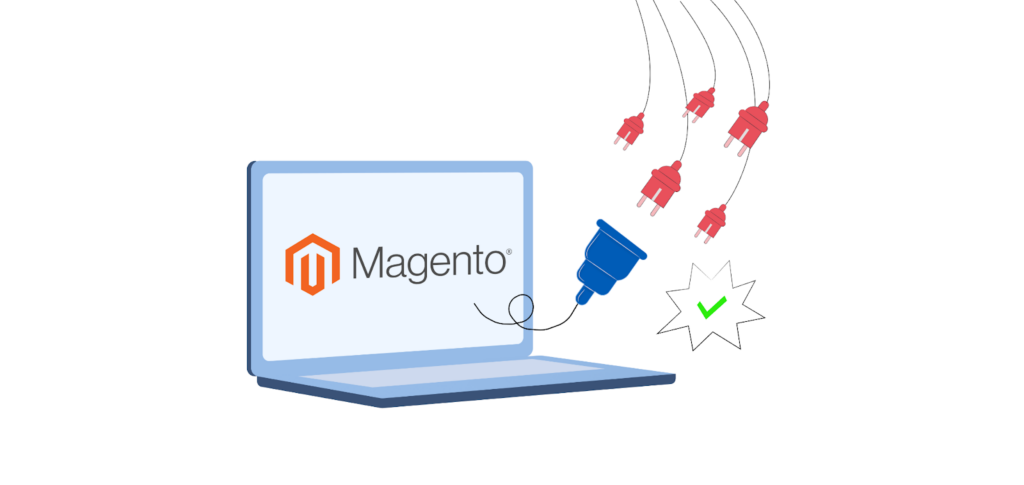
After finalizing your front-end design, the next step is to integrate functionalities into your store, which is achieved through extensions. Similar to website design, integrating functionality presents two options: custom-building your extensions or selecting from third-party extensions.
If you find an extension that perfectly fits your requirements, you can easily purchase and integrate it. However, for unique requirements, custom development is an option. Both custom-built and pre-made extensions may cost you around $0 to $600 per extension, depending on your requirements.
7. Magento Store Development

After purchasing a domain, hosting, SSL certificate, themes, and extensions, you’ll need a professional to put it all together and develop a store out of it. This is because Magento has a complex architecture that requires technical know-how for anyone looking to work with it.
Here, you’ve got 3 options.
- Hire an Agency or Freelancers
- Hire an In-House Development Team
- Self-Build
In easy terms, Magento store development cost is the cost of hiring Magento developers. And all of these options come with different costs, as well as pros and cons that need to be considered.
Let’s learn them.
Hire an Agency or Freelancers
If we talk about budget-friendliness, hiring a freelancer can be a cheaper option than hiring agencies when the project size is smaller. However, it’s better to note that freelancers don’t usually have the same level of team support or established workflows as an agency. The rate of Magento developers, be it freelancers or agencies, can vary anywhere from $10 to $250 per hour.
These rates will depend on factors such as location, skills, experience, project complexity, and customization needs.
Hire an In-House Development Team
For medium to large businesses, having an in-house development team offers greater control over the development process. Developer salaries vary based on expertise and location, typically ranging from $75,000 to $150,000 annually.
This annual cost estimation typically equates to an hourly rate of roughly $50 to $75.
Self-Build
If you have technical expertise and your expectations from your store aren’t that high and complex, self-development is also an option. This may cost you nothing as development costs. However, when you choose to self-develop your Magento store, you won’t be able to focus well on other business activities.
That was all about costs. For an approximate estimate, Magento store development cost would start around $1,800 and may extend to $25,000 depending on your store size and complexity.
Lastly, make a wise decision about how you prefer to spend on your Magento store development.
8. Additional Costs (After Store Launch)
While the costs mentioned above get your Magento store off the ground, they’re not the finish line.
Here’s why: Magento store development is an ongoing investment. There will be additional expenses to consider after your store is launched. So, let’s look at them here.
(1) Support and Maintenance
Over time, even the most meticulously built website can encounter bugs or lack optimal website performance. This requires regular website maintenance. On top of that, Magento releases regular version updates to address security vulnerabilities and improve functionality.
And as I mentioned earlier Magento has a complex architecture, you’ll need a Magento expert to handle these maintenance tasks for you. If we talk about cost figures, the cost of support and maintenance will depend on your store’s complexity and your frequent needs. The pricing will range from $25 to $125 per hour for freelance developers or $1,000 to $5,000 for agencies.
(2) Payment Providers Fees
You’ve successfully attracted visitors and have convinced them to purchase from you with your marketing efforts. Now, let me tell you that selling online also comes with a cost, and that is transaction fees charged by payment gateways you choose to work with.
Every payment gateway charges different fees per transaction. On average, you can expect to pay around 2.9% + $0.30 per transaction when selling with any payment gateway.
So, that was all about the costs associated with Magento Store Development.
Until now, we understood all the costs that you can expect to develop a brand new store on Magento and keep it healthy over time. Now, it’s time to understand the time taken for building a store.
Let’s get into it.
Time to Build Magento Store

You’ve likely heard that Magento is a complex platform requiring a lengthy development process.
But, the burning question remains unanswered “How Long?”
In this section of the blog, we’ll figure out how long it may take you to build a store with Magento with an in-depth explanation of tasks that the development process will revolve around. First of all, let me mention that your journey to a successfully built Magento store, will split into 3 parts.
Three Stages of Your Magento Development Journey:
||| Planning & Strategizing |||| Design & Prototyping |||| Development & Launch |||
Let’s start understanding these phases of development along with their estimated timeframes.
Stage #1. Planning & Strategizing for Magento Store

The first stage to building anything is planning.
This phase is crucial, the better you perform here, the better results you can expect. When you define your project scope and functionality, you can also minimize the risk of unexpected changes or delays later in the design and development process.
Here are some areas that you define in the planning stage for your Magento store development.
| Key Tasks | — |
| Business Requirements | What products or services will you offer?Who is your target audience?What are your business goals? |
| Target Audience | Who are they?What is their region?What are their needs and browsing habits? |
| Store Features | What are some most necessary features for your eCommerce store?What are some features that are worth having depending on your niche and target audience? |
| Site Map & Purchase Journey | What are some necessary pages needed for the website?How you will arrange web pages?How long will be the customer’s purchase journey? (Steps from product discovery to checkout) |
Here, you get an idea of what kind of tasks you’ll have to work on in the planning stage. The time you spend on planning these tasks will help you understand the size of your eCommerce store and your expectations from the developers.
Planning these tasks will require time depending on your business and catalog size.
- Simple business, small catalog — Few days
- Established business, medium catalog — 1 to 2 weeks
- Complex business, large catalog — 2 to 4 weeks
- Enterprise business, extensive needs — May take months
Now, let’s move to understand the time taken in stage 2.
Stage #2. Design & Prototyping of Magento Store

Once you’ve finished planning for your Magento website, it’s time to move on to the design phase.
Here, you’ll collaborate with a website designer, and explain to them your vision for your website such as the layout you prefer, the color scheme of your brand, typography, imagery, and more. Later on, the designer will create low-fidelity or high-fidelity prototypes to visualize your design concepts and gather your feedback before finalizing the design.
Once you approve the store design, the designer will create design mockups and style guides outlining your chosen colors, fonts, design elements, and more that further ensure consistency in the development process. Depending on your requirements, the design and prototyping process may take weeks to months.
Here I’ve added time estimation for designing the front end of your Magento store for a variety of business requirements that you may have.
- Simple Store, with limited web pages — 1 to 2 weeks
- Need of custom design elements and more intricate layouts — 2 to 4 weeks
- Extensive branding requirements or complex user interfaces — More than 4 weeks
It’s important to note that this time will vary depending on the amount of revisions you expect your web designer to make to the proposed design. And all of it boils down to how you planned everything. So, slow down your planning time and provide clear guidance to the designer.
This will ensure that the designing phase does not consume more of your time.
Stage #3. Development & Launch of a Magento Store

Once the design is finalized, it’s time to get in touch with the Magento developer and hand off the final design assets, style guides, and any relevant information that helps with the development process.
After getting all the required information, developers will start translating your design mockups and style guides into functional code. The code will build an entire frontend that users can interact with, such as menus, product listings, checkout pages, and more. The development process will be further carried away with the store’s backend development, functionality & security testing, and more.
Once, everything is tested and approved, you’ll have a Magento store that is ready for launch. 🚀
The timing required for the development and launch phase is longer and will depend on the store’s complexity and size. Below, I’m sharing a time breakdown.
- Limited product catalog, standard functionalities, and minimal customization — 2 to 4 months
- Larger product catalog, custom functionalities, and integrations — 4 to 8 Months
- Vast product catalog, custom features, and complex integrations — More than 8 months
So, here we’ve got all our answers relating to HOW MUCH and HOW LONG it will take to build a successfully running Magento store. Now, let’s get into understanding the factors that may influence the given time and cost estimations.
Stick around as it’s a ‘do not miss’ part.
Factors Affecting Time and Cost of Building Magento Store
While you might yearn for a simple “time and cost” answer for building your Magento store, the reality is kinda nuanced. Several factors influence the development timeline and budget and I’ll be listing them here.
1. Size and Complexity Of Your Store
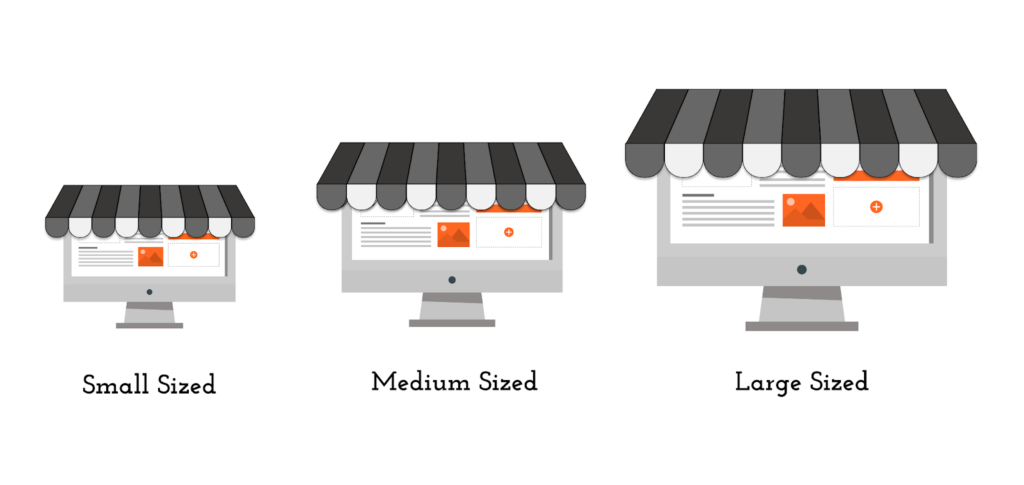
It’s a common factor that you must have an idea of.
Smaller stores with fewer functionalities and basic design needs, generally require less development efforts. Consequently, the lesser efforts will lead to a reduced development timeline and overall lower cost.
On the other hand, big business aka the larger stores would aim for an advanced and complex store, resulting in an increased development time and cost. This is because the complex stores often include extensive functionalities, integrations, custom website design, and advanced front-end technologies like PWA, Hyva, Luma, and more. As the complexity increases, so does the effort needed from developers, leading to a higher overall price tag.
2. Your Development Choices
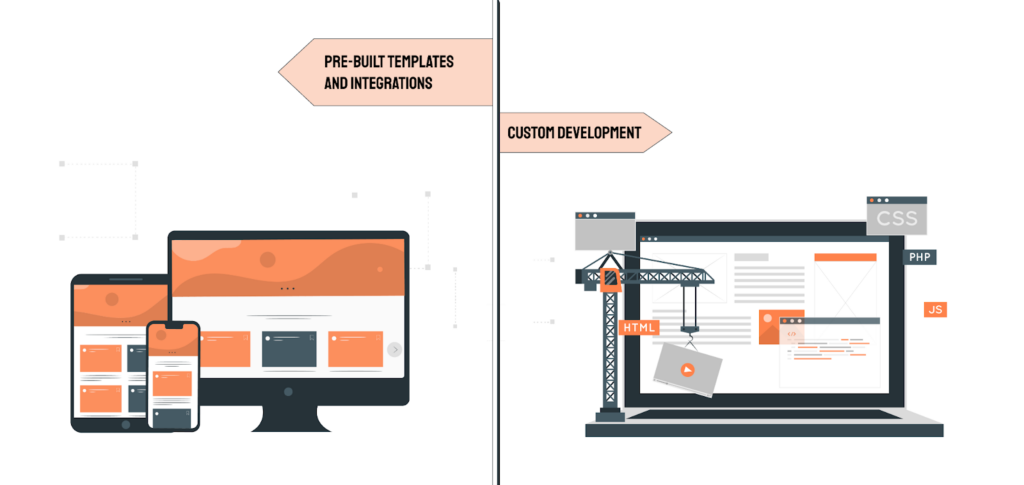
Your choice of development is another factor that may influence the time and cost estimates.
Pre-built themes and extensions offer a quick and cost-effective solution, getting your store ready faster. However, extensive customization of pre-built themes might require additional development effort while letting you perfectly match your vision.
The choices between them depend on business priorities, as both options offer convenience for different business scenarios. This means that considering your development choices will lead you to have accurate time and cost estimates.
3. Development Team Size and Expertise Level

The size and skill of the development team will also determine how quickly your store is up and ready.
A larger, more experienced team can efficiently deal with technological aspects and deliver your store more quickly. On the other hand, a smaller or less experienced team may require time to navigate through technicalities, leading to extended timelines and increased development costs.
Moreover, experienced developers write cleaner, more efficient code, minimizing errors and rework, while less experienced developers might require more time to complete tasks and fix errors.
Lastly, It’s worth considering that you cannot necessarily decrease development time by increasing the number of developers on your team. This is because development tasks often cannot be easily parallelized, and dividing work among multiple developers doesn’t always work as normal. In many areas of development require a single developer to see a task through from start to finish.
What does this mean?
Okay, for example, if your Magento development project is given a timeline of 4,000+ hours and the development agency has allotted 4 developers to work on the project, increasing the number of developers to 8 may result in faster development but will not necessarily double the speed.
4. Quality Of Business Analysis
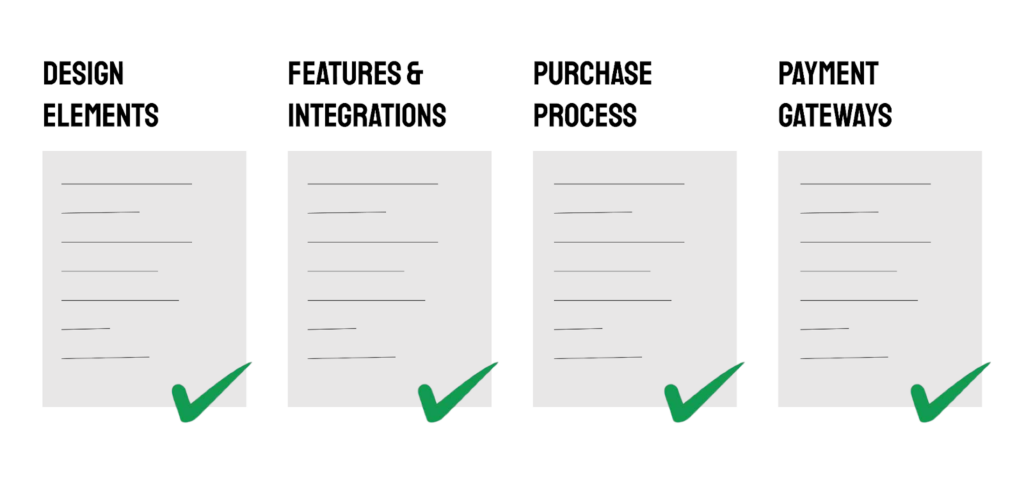
By the quality of business analysis, I mean how well you’ve defined your expectations from the final product. If you’ve done clear research on what kind of functionalities and integrations you want in your store or how you wish the development process to be, you can explain it better to the developers working on your project.
When the idea isn’t explained well, there may be a situation where the developer starts working over his interpretation that does not match your expectations, needing re-work. To avoid such clashes, conducting a business analysis from the beginning is suggested to outline exactly how the store should function. Your clarity over the final product will help developers build what you want while avoiding mistakes and reducing development time.
These were some of the main factors that may affect your time and cost estimation for Magento store development. Now, it’s time to get your additional doubts solved.
FAQs – Magento Time and Cost
Q1: How does Magento pricing work?
Answer: Magento is free to use, however, the pricing to develop a Magento store depends on your store requirements, features, and the level of customization required. The costs associated are:
- Development Cost
- Designing Cost
- Themes and Extensions Cost
- Hosting Cost
- Support & Maintenance Cost
Q2: How long does developing and launching a Magento store take?
Answer: Magento development and launch time may vary depending on store complexity. Here are general estimates to understand the time taken for the Magento store launch:
- Simple Store — 2 to 4 months
- Medium Complexity Store — 4 to 8 Months
- Complex Store — More than 8 months
Q3: How much does developing and launching a Magento store cost?
Answer: The cost of Magento store development and launch may vary depending on store size and complexity. Here are rough estimates to understand the cost associated with Magento store development.
- Simple Store — $5,000 to $20,000
- Medium Complexity Store — $20,000 to $50,000, or more
- Complex Store — Around $50,000 or more
Q4: What factors affect Magento development timelines and cost?
Answer: Multiple factors affect the development time and cost of your Magento store, including project complexity, development team experience, number of custom features, third-party integrations, your vision for the project, and more.
Q5: Are there ongoing costs after the Magento store launch?
Answer: Yes, developing a Magento store is going to be an ongoing investment. You’ll definitely need to factor in costs for store maintenance, security updates, performance optimization, content updates, potential feature additions, and more over time.
Q6: How can I save on Magento Development?
Answer: To save on Magento store development, it’s advisable to focus on project planning, utilizing open-source Magento edition, and pre-made themes. Furthermore, you can also negotiate development costs with developers, and consider hiring developers from regions such as India, Japan, or countries where your currency holds greater value.
Q7: How much does a Magento developer cost?
Answer: When hiring a Magento developer, you have two options: freelancers or an agency team.
The cost of hiring a freelance Magento developer starts at $10 per hour and may extend to $50 per hour, depending on the expertise level of the developer. Moreover, hiring a Magento expert from an agency would cost from $20 to $250 per hour, depending on the developer’s expertise level.
Last Words
You’ve likely visited multiple websites searching for an accurate cost and timeframe for building a Magento store. I’m sure you haven’t found a definitive answer yet.
This is because it does not exist.
It’s impossible to provide an exact cost and timeframe without understanding your unique requirements. If you find a website claiming to do so, be cautious – they might be making unrealistic promises.
In this blog, I’ve shared cost and time estimations for building and running a successful Magento store. This should give you a general idea of the investment involved if you choose Magento as your eCommerce platform.
While definitive time and cost figures require further analysis, it’s not entirely impossible. You can always reach out to our Magento experts. They’re highly experienced and eager to understand your project scope. By working together, they can provide you get an accurate estimate, giving you a clear roadmap for building your Magento store.
So, when do we expect to meet you? Book your appointments here.
Additional Resources:
I’m sure your research journey isn’t stopping here. You may have multiple questions lingering over your head, such as;
I’ve added links to both of the resources that will help you solve your further doubts relating to how the hiring process will be, and what are some best development agencies you can trust for your Magento project. 😀






Post a Comment
Got a question? Have a feedback? Please feel free to leave your ideas, opinions, and questions in the comments section of our post! ❤️